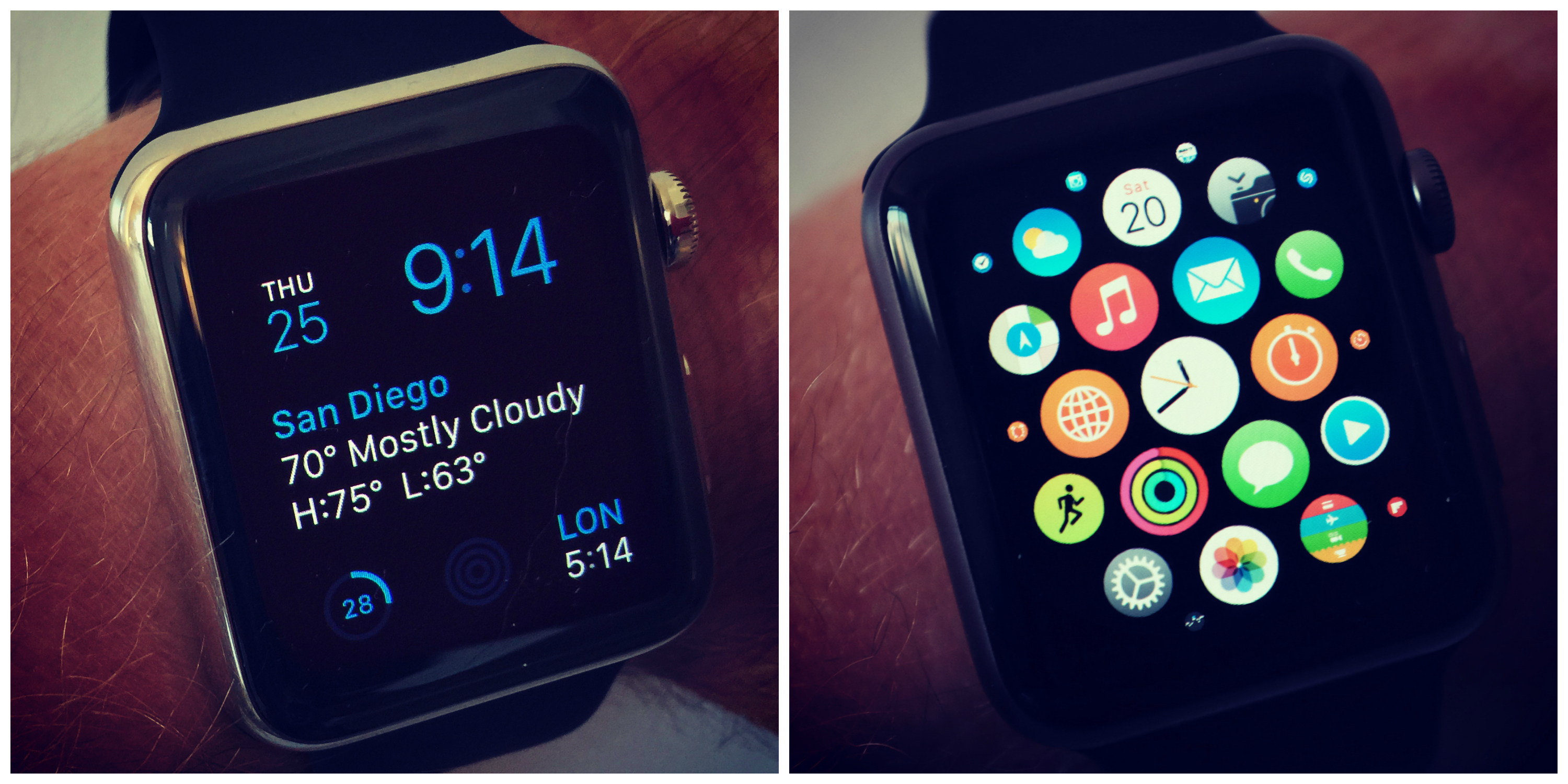After spending 7 days with Apple Watch Sport—and largely enjoying it—time comes to test the next pricier model. When trying to compare the two, I find very little useful from Internet searches. So a primer is in order for other folks also wondering: Which one is right for me? Ultimately, the best answer will come from going into an Apple Store (if there is one nearby) and putting the timepieces on your wrist.
Last week, I compared Android Wear and Apple Watch platforms, starting from the different design ethics behind them. Obviously, timepieces from the bitten-fruit logo company are more alike, with the main differences being materials, pricing, and target customers. Interestingly, the combinations offer subtle changes in benefits that will matter much to some shoppers. Henceforth, I will refer to the devices as Sport, for the aluminum model, and Apple Watch for the stainless steel sibling.
Apple Watch and Sport are functionally identical. You pay more or less for materials, and subtle design differences. For reasons that make little sense to me, the packaging for one looks little like the other (Long and flatter for Sport and boxy bigger for Apple Watch).
Sport is available in 10 styles and Apple Watch in 20. For both, there are 38mm and 42mm sizes. Sport prices are $349 for the smaller and $399 for the larger, regardless of color wrist strap (black, blue, pink, and white). Apple Watch starts at $549 and $599, based on size, and prices climb depending on the accompanying band.
Cost of the black (what Apple calls space gray) Sport is the same as silver styles. However, the stainless steel variant (space black, officially) costs considerably more ($1,049 or $1,099) than its siblings.
The black band is sold with the black Sport. Meaning: If you want the black strap on Sport, plan on buying the darker timepiece; not silver. However, the black Sport band also is available for silver Apple Watch. The company creates choices for those willing to pay more.
By the way, four different Apple Store sales specialists told me that the space gray Sport with black band is the most popular among all styles.
Apple Store will swap the band, if the combination you want isn’t available. Of course, you must pay the difference, if any. When purchasing Apple Watch, I considered the costlier style with Classic Buckle strap. But the shop didn’t have that one in stock. The sales specialist offered to let me switch out and pay a little more. I declined.
Bands are interchangeable among watches of same measurement (e.g., 38mm). They are super simple to swap, too. Cleverly so. Depress a button on the back and slide off the strap, then slip in another. Brilliant!
Apple Watch’s display is more durable than Sport’s—sapphire crystal versus Ion-X glass. Think Rolex compared to iPhone, with respect to what abuse the screen can take from day-to-day use. Difference is this: Should you accidentally bang the device against a hard surface—and who doesn’t—sapphire is less likely to scratch.
Hardened crystal isn’t necessarily better than glass. While I like the look of Apple Watch more than Sport, I don’t find looking at the timepiece to be as functional. Outdoors, in the San Diego sunlight, the sapphire display can be difficult to read. Viewing angles are diminished, and even straight-on viewing can be challenging even at full brightness. I had no such troubles with Sport. Simply: Sapphire is more reflective. If you will mostly wear your smartwatch outdoors, Sport may be the better choice.
That said in normal lighting, Apple Watch seems more readable to me. But that may be more subjective perception than reality.
Apple Watch’s body is more likely to scratch than Sport, or at least to show blemishes. It’s the nature of the material and its luster. The aluminum finish is more matte, while the 316L stainless steel is shinier. Apple promises the benefits of sapphire glass—and its durability—but don’t expect the same from case. Stainless steel scratches more easily. It’s not a deal breaker, just comparing benefits spending more or less.
AppleCare+ for the stainless steel watch costs more. That’s $69, rather than $49—and you absolutely should pay for the extra protection. Sapphire is not invulnerable to damage from drops. and Ion-X glass will shatter. Yeah, think iPhone, or watch this shocking drop test. AppleCare+ extends the warranty for two years, and the fruit-logo company will replace the timepiece, up to two instances—$69 for Sport and $79 for the costlier model.
Apple Watch weighs considerably more than Sport. I noticed the heft immediately. The 42mm space gray Sport is 30 grams, without strap. Apple Watch: 50 grams. I hardly notice the aluminum timepiece on my wrist, making, by contrast, the stainless steel feel very present. If weight matters, do try both before purchasing.
